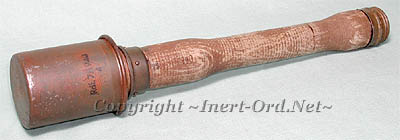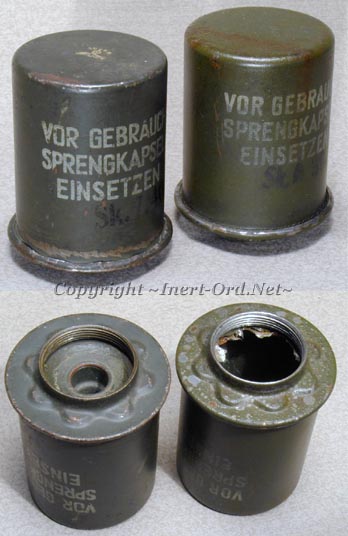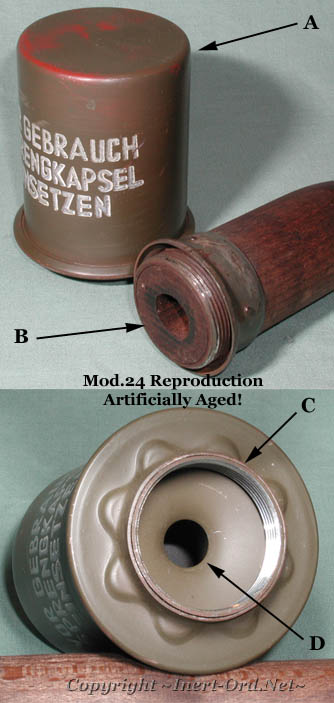The Stielhandgranate is found in two basic color schemes, a forest green (shades vary from light to very dark) and a medium tan (also known as "Desert Tan"). The Mod.43 is most commonly encountered in that color.
I was never quite sure if it was a vintage paint scheme, but it certainly looks original. For lack of a better term I've named this coloring as "Winter White".
In the the photo, to the right, you can make out what appears to be a similar white washed handle on the grenade shown.

The red/orange color undercoat is common to find. Some have very thick multi layer paint on them, others appear to have one thin coat of just the final color.
German
Unit Leaders near Leningrad watch for enemy movement in a photo originally
published in the WWII German Magazine "Signal" =>




